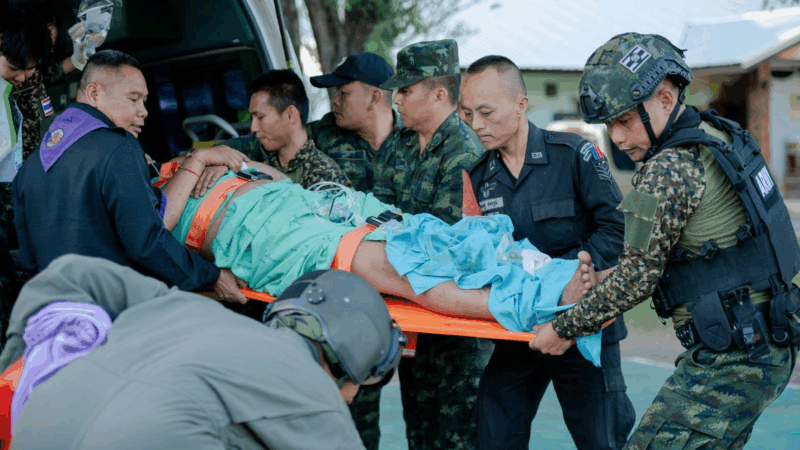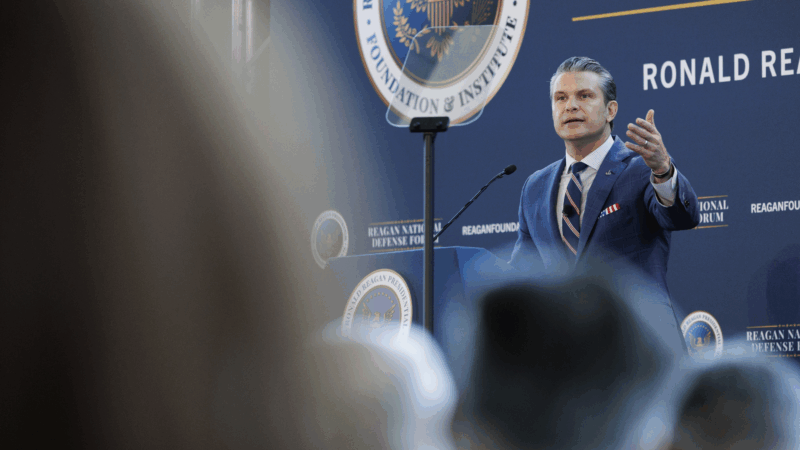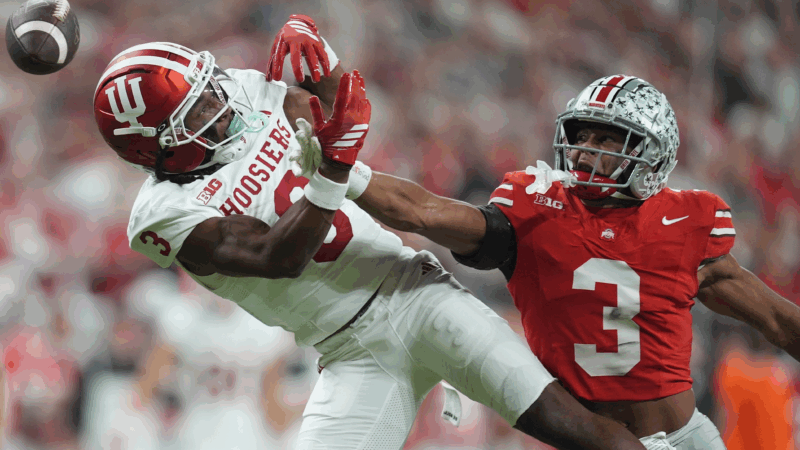Remembering The Death That Sparked The Selma Marches
This week marks the 50th anniversary of Bloody Sunday, the day police in Alabama beat marchers going from Selma to Montgomery in support of voting rights. Less well-known is the violent confrontation that sparked the Selma marches. It happened a few weeks earlier during a demonstration in Marion, a small town near Selma. A black civil rights activist named Jimmie Lee Jackson was shot and killed.
The Zion United Methodist Church in Marion was packed on a recent weekend. People wearing their Sunday best clapped, cheered and honored Jimmie Lee Jackson. Fifty years ago, the 26-year-old Vietnam veteran and Baptist deacon was shot by an Alabama state trooper after what was supposed to be a peaceful demonstration.
“Let’s get some spirit up in here in honor of Jimmie Lee Jackson who died for us!” yells Bobby Singleton, revving up the crowd. Singleton says Jackson’s death is an overlooked turning point in the voting rights story.
“Freedoms that we enjoy are on the backs of Jimmie Lee Jackson! So let’s give him some praise up in here today,” Singleton says, to cheers.
Billie Jean Young is a professor at Judson College in Marion and author of a play on Jackson’s life. “People like to, I think, feel that things started with Selma,” says Young. “But people in Marion are well away we had our own voting rights campaign here.”
Young says Jackson was involved, inspired after hearing his 82-year-old grandfather talk about wanting to vote.
Marion’s voting rights campaign held a series of demonstrations in February of 1965. On February 18, James Orange, an organizer for Dr. Martin Luther King’s Southern Christian Leadership Conference, was arrested and thrown in the Perry County Jail, just a block down the street from the church.
“People crowded Zion Church that night,” says Young. “They were very upset — not just that he was jailed, but that there was talk that they planned to kill him.”
Hundreds of demonstrators tried to march from the church to the jail, but they didn’t make it far. Walta Mae Kinnie was there.
“Half of us had gotten out of the church, and some had marched, started toward the jail. And they shut the lights out. The city turned the lights out,” remembers Kinnie.
Alabama state troopers, local law enforcement and a mob of angry white residents met them outside.
“They beat people and ran them every which way,” recalls Kinnie.
Kinnie says she and many others still have scars from that night. According to news accounts, the marchers weren’t armed. Black Marion residents were attacked and beaten with billy clubs, whether they were marching or not. Jackson was shot in a cafe where witnesses said he was trying to protect his mother from beatings. He died a week later.
The people in Zion Church came to remember what history often forgets. Unlike the Selma march a few weeks later, there are no iconic photographs of that night. Journalists were beaten, their cameras smashed. But word got out. A segregationist newspaper even called Marion a nightmare of state police stupidity.
From there, Billie Jean Young says the story goes, someone said “Well, we need to take his body to Montgomery and give it to George Wallace,” the governor of Alabama.
Albert Turner Jr. is the son of an organizer of the Selma march. He says Jackson’s death was the catalyst for the marches to Montgomery.
“He was not a rabble-rouser,” says Turner. “He was an individual whose death summarized the extent that this country and this state would go to to keep African-American people from becoming full-fledged citizens.”
C.T. Vivian of the Southern Christian Leadership Conference escaped the violence that night in 1965, but he returned to Marion for this service. He says what happened in this city will forever hold a strong place in his heart and the movements.
“Anytime anybody is killed,” says Vivian, “That should be the cry for everyone to speak to the fact that only life is worth dying for. It sounds strange, but it is true.”
The cafe where Jackson was shot is gone, but a plaque honors him nearby. The Alabama state trooper who killed Jackson wasn’t indicted until 2007. He pleaded guilty to manslaughter and served six months in jail.
Tributes, not politics, play center stage as Trump hosts the Kennedy Center Honors
President Trump said he was closely involved with picking the honorees, and on Sunday he became the first president to host the Kennedy Center awards ceremony.
Thailand launches airstrikes along border with Cambodia as tensions reignite
Both sides accused the other of breaking a ceasefire that halted fighting earlier this year. Longstanding border disputes erupted into five days of combat in July that killed dozens.
Light from satellites will ruin majority of some space telescope images, study says
Astronomers have long been concerned about reflections from satellites showing up in images taken by telescopes and other scientific instruments.
Defense Department is reviewing boat strike video for possible release, Hegseth says
In a speech on Saturday, Defense Secretary Pete Hegseth defended the strikes, saying: "President Trump can and will take decisive military action as he sees fit to defend our nation's interests."
Bama, Miami in, Notre Dame out and Indiana No. 1 in College Football Playoff rankings
Nobody paying attention for the past 24 months would be surprised to see Indiana – yes, Indiana – leading the way into this year's College Football Playoff.
McLaren’s Lando Norris wins first F1 title at season-ending Abu Dhabi Grand Prix
Red Bull driver and defending champion Max Verstappen won the race with Norris placing third, which allowed Norris to finish two points ahead of Verstappen in the season-long standings.







